“PIKKU SAARI” featured in our Textile Story column in this October is one of the textile lines inaugurated at Kokka 2015 Fall Collection. When PIKKU SAARI finally got commodified, we put the photo of “SAARIST”, which is one of prints from PIKKU SAARI and depicting the islands in the sea surrounding Helsinki, on our Instagram page. Instantly, “like” posts for the photo took off as well as international comments about the textile, such as “I want it!” and “Where can I buy it?”. Here is the interview with Eri Shimatsuka, who is the creator and designer of PIKKU SAARI giving you the breeze of Finland through her textile.
 (Pic: Shimatsuka’s home-cum-studio in Helsinki. She enjoys the view of a maple tree and the changing of seasons through the big window in front of her desk.)
(Pic: Shimatsuka’s home-cum-studio in Helsinki. She enjoys the view of a maple tree and the changing of seasons through the big window in front of her desk.)
It goes all way back to my junior high school days. At the age of 13, I was asked by my mother’s friend if I was interested in joining in a summer homestay program in Finland. It was a completely unexpected question for me, and I had no knowledge about the country. Somehow, I said yes. It was my first trip overseas. Everything was so new to me, and I really fell in love with Finland. The intoxicating experience induced me to study English more as well as greeting phrases in Finnish.
As my given name Eri (絵里), I liked drawing “e” (絵 = a picture) since my childhood. During my high school years, I attended a college-prep school focusing on entrance exam for art colleges. But my drawing instructor said to me, “It is easier to learn a foreign language when you are young, so go for it if you are interested. It’s never too late to start drawing.”
His advice was a trigger to change from studying art to learning a new language. I went on Tsuda College to major International and Cultural Studies. Within this department I had a professor who specialized in Finnish Studies.
In my senior year, I went to the United States to study for a year. I chose to spend the long summer not in the U.S. but Finland. My trip to Finland took me back to when I was an impressionable teenager. The nostalgia for the dreamy days in Finland rose in me again and again while having a reunion with old friends.
I took a basic course in art that I had wanted to do for a long time. I could study art inclusively, not only graphic design and photography but also practical work such as making a cardboard chair.
No, I didn’t. Sometimes things don’t go as planned or wished, you know. It was job-seeking season for college students when I returned to Tsuda College after my one-year of study in the United States. Seeing my classmates, who were struggling to find a job, I agonized over my future. While I applied and went for job interviews like other people, still it wasn’t quite convincing for me. “What did I want to do?” “What is the occupation which I can remain true to myself?” After debating with myself, I made a decision to teach English which had broadened my world. I started working as a part-time English teacher at my alma mater in Tokyo. Later I moved to Okinawa Island, the southernmost prefecture of Japan, for an English teaching job at a school with a correspondence high school diploma program.
While in Okinawa, I had a chance to watch “Gaia Symphony No.5” from a series of documentary films on various ways of thinking and lifestyles in related with the earth, nature, and the environment. I was tremendously attracted by the episode of Ms. Ishigaki, a textile dyer in Japan’s subtropical Iriomote Island.
Ms. Ishigaki had her dyeing studio named “Kuuru-Koubou” to revive the natural plant dye and weaving technique on the island with its amazing nature. “Kuuru” is a native plant of Iriomote Island and used as a dye of beautiful and subdued reddish brown. Though I applied to be her apprentice, Ms. Ishigaki nicely advised me that it would better to have some background in textile. I couldn’t be an apprentice for her then, but later I contacted her again as soon as I decided to study textile in Finland. Before the school year started, I revisited Iriomote Island to finally learn about the traditional textile dyeing from Ms. Ishigaki.
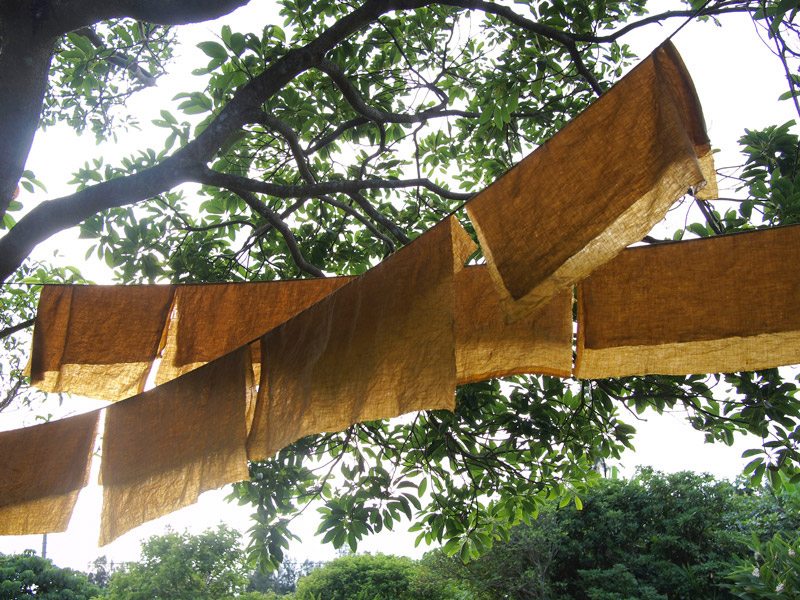
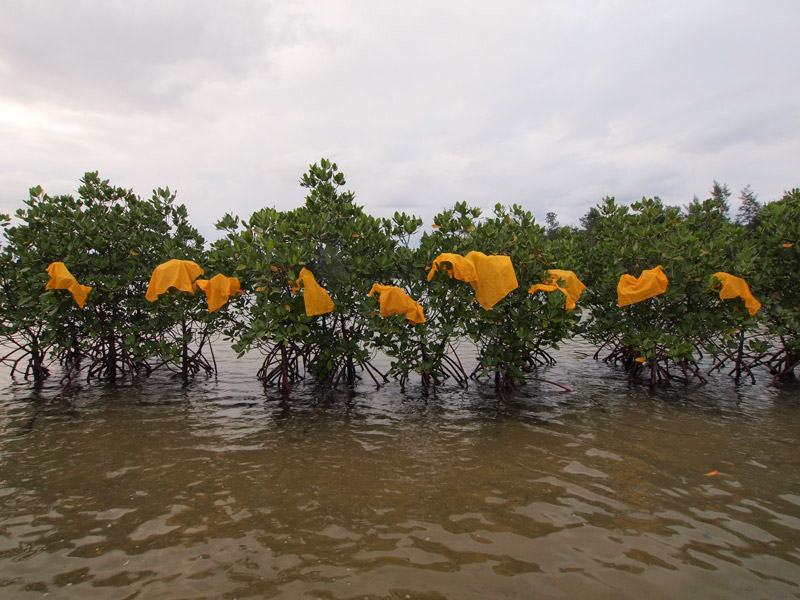 (pic: The clothes are stained with the dye made from “Fukugi”, an evergreen high tree. To restore the color, the dyed clothes are washed in shallow with mangrove trees where mixing of seawater with freshwater. This traditional way to preserve color is called “Umi-sarashi”. After washed, they are hung and dried.)
(pic: The clothes are stained with the dye made from “Fukugi”, an evergreen high tree. To restore the color, the dyed clothes are washed in shallow with mangrove trees where mixing of seawater with freshwater. This traditional way to preserve color is called “Umi-sarashi”. After washed, they are hung and dried.)
Ms. Ishigaki insisted on the importance to create a favorable environment for mulberry trees. Beautiful silk threads can be produced by healthy silkworms which eat nutrient-rich mulberry leaves. Based on her belief, she launched the project to raise healthy silkworms. “Making a textile is only a fraction in the cycle of Mother Nature. Clothing, food and shelter – everything in your life is sustained by any lives.” This remark I’ve never forgotten.
I also had a rare opportunity to learn how to make the thread of “Basho”. It is made by stalks of Japanese banana fiber called Basho. The process of making thread has several steps; peeling, boiling, removing plant debris and scraping the strips of fiber. Scraping is tricky. It shouldn’t be too soft but shouldn’t be too rough. Ms. Ishigaki said, “It’s the moment just like Zen meditation.”

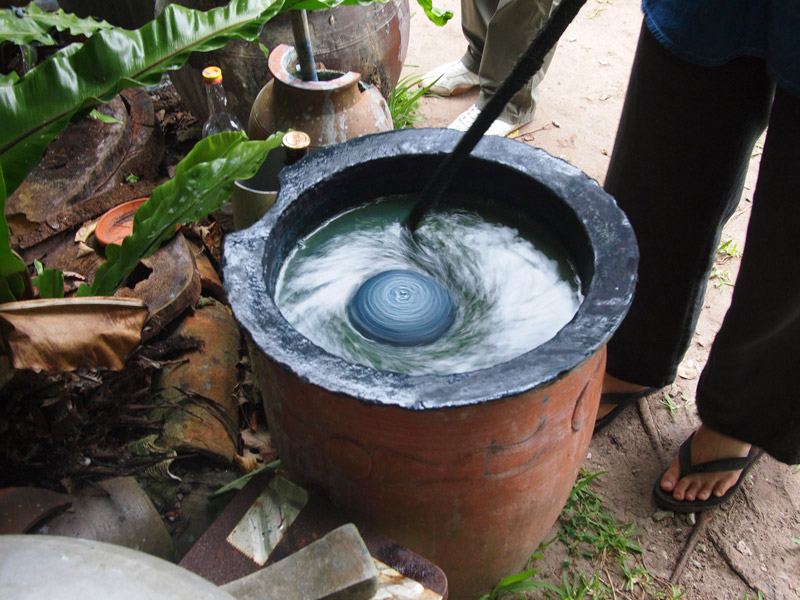 (pic: “Ai-zome” or indigo dyeing is very long and complicated process. Ai-zome produces a wide range of shadow depending on how many times the cloth is dipped. Sake and Mizuame syrup are added as needed to nourish the bacteria in the dyeing solution.)
(pic: “Ai-zome” or indigo dyeing is very long and complicated process. Ai-zome produces a wide range of shadow depending on how many times the cloth is dipped. Sake and Mizuame syrup are added as needed to nourish the bacteria in the dyeing solution.)
Why textile? That’s because I’ve liked drawing since childhood, and it was my dream. The activity of Ms. Akiko Ishigaki inspired me a lot. Textile is the most familiar item for us in our daily life. It is next to the skin all the time. But I didn’t make a decision immediately. It’s like I gradually found my own direction to be “with textile”.
Yes, I chose “textile” then. However, in fact, the textile art is categorized into various things such as weaving, print, and so on. I am still asking myself what my specialty can be or should be.
Just after I moved to Finland, I felt the need to work while I had just enrolled in a language school. Promptly I applied for a job at Marimekko, but I failed it due to my Finnish skills. Then I studied Finnish very hard and contacted Marimekko a few months later after I enrolled in Aalto University. I inquired in Finnish, and they gave a better response. Thus, I could start working at a Marimekko shop as a store staff. Two years later, I applied for the internship at Art Work Studio and got a chance to work there for three months as a trainee. With my working experiences at the shop and studio, I could finally become a permanent employee of Marimekko.
I learned a lot. Many artworks of Marimekko had been archived, and I could closely see and study. Some historical or famous artworks were included in the archive. While preparing for new collections, I could catch upcoming trends earlier than anyone through designer’s original sketch. It was really exciting.
Our studio transformed designer’s original sketch and vision into a pattern for prints. While my job title was a designer, there was an unwritten rule that we should not draw sketch or make a design. The more I worked there, the more I wanted to design by myself. In the meanwhile, I needed to take a leave of absence for 2 years from Marimekko to focus my college senior project. During the leave, I was approved to submit my sketch and design plan to Marimekko as an independent designer. Eventually three patterns, which I had designed for my senior project were highly evaluated by creative director and adopted to Marimekko’s textiles.
Two years later, when I earned a bachelor degree, I faced a tough choice in my career: going back to the Art Work Studio for a permanent job or being a freelance designer. To be honest, I was torn to choose between the two. In Finland, it is very difficult to get or keep a steady job in the textile industry. And it must have been a great honor for me to return to the job in Marimekko in which I had loved. After agonizing over for days, I decided to become self-employed to pursue my creative passion. My then-boss’s advice, “Take a risk or regret it in future”, encouraged me. It was June, 2014.
Living with the nature in Helsinki inspires me. Finns enjoy their short summer to the full. I spent this summer at a summer cabin by a lake, which is a three-hour drive away from my house. Sweating out in sauna and jumping directly into the lake, I enjoyed such refreshing days in nature.
This is the picture of the mystic white night in Finland.

At Finnish Lakeland. After raining, a beautiful rainbow came out across the sky.
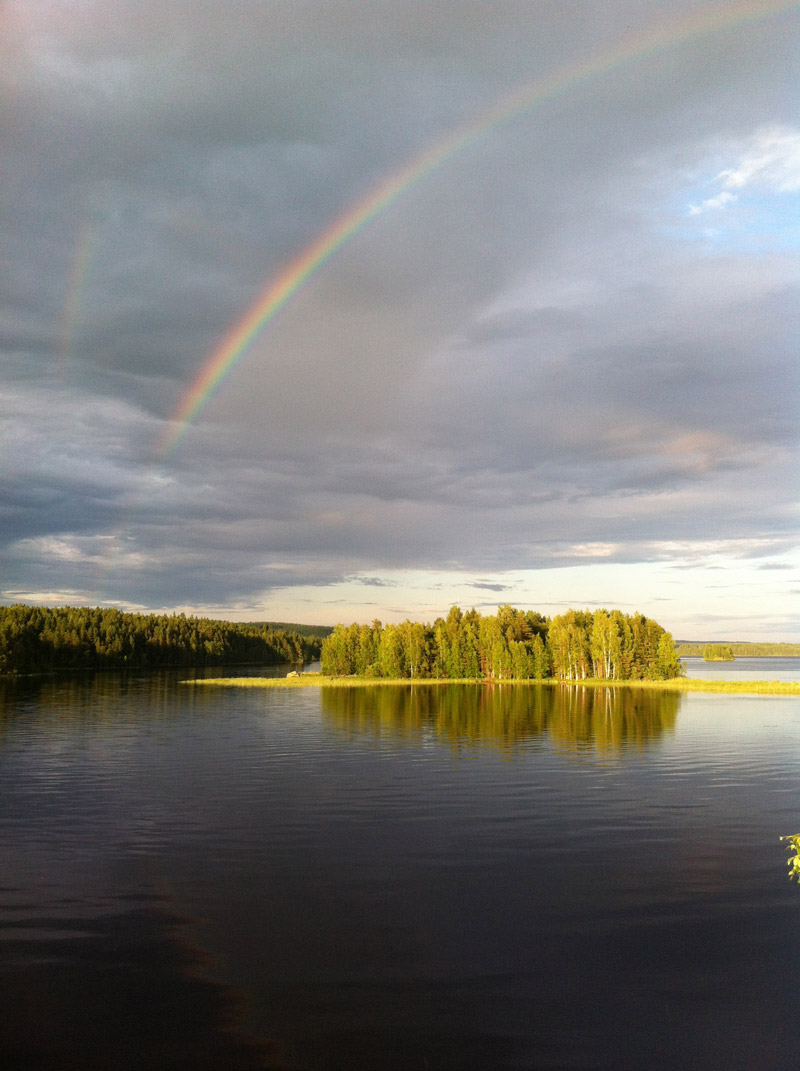
This is the summer cabin with no electricity I stayed for a week. In silent, I felt like as if I could have heard my heartbeats.
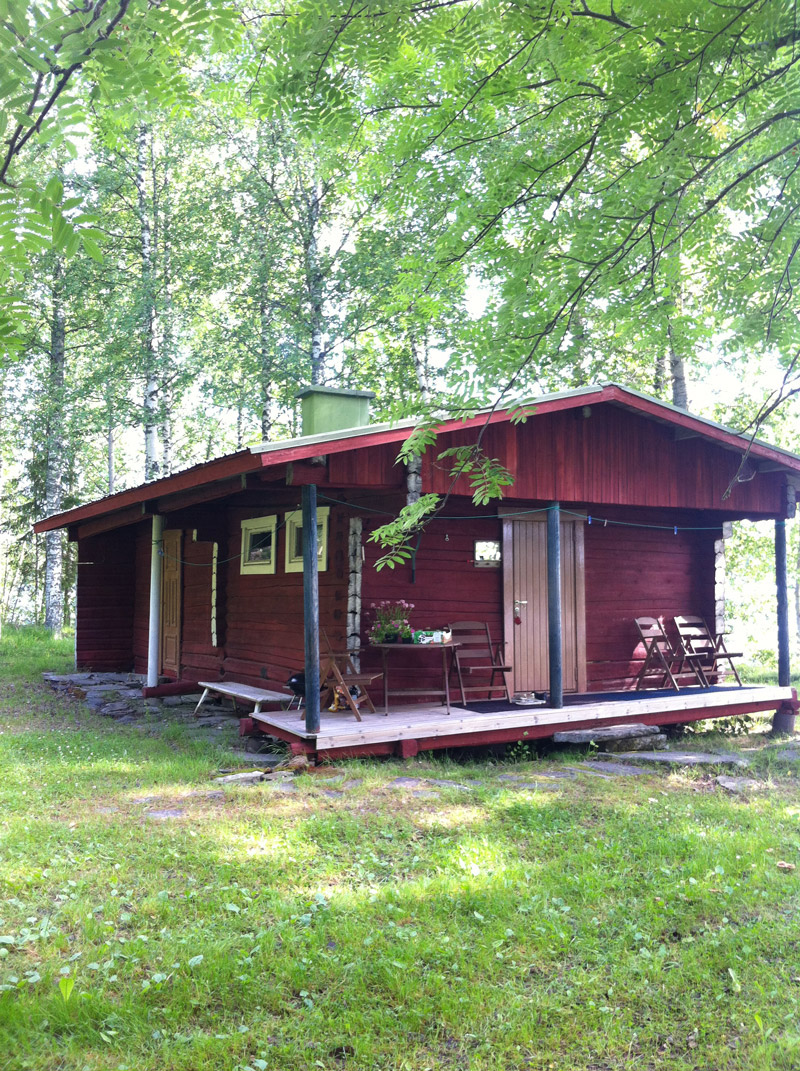
I quickly sketched while picking blueberries. The rough sketches of what I met at the lake or forest will be developed to my textile design.
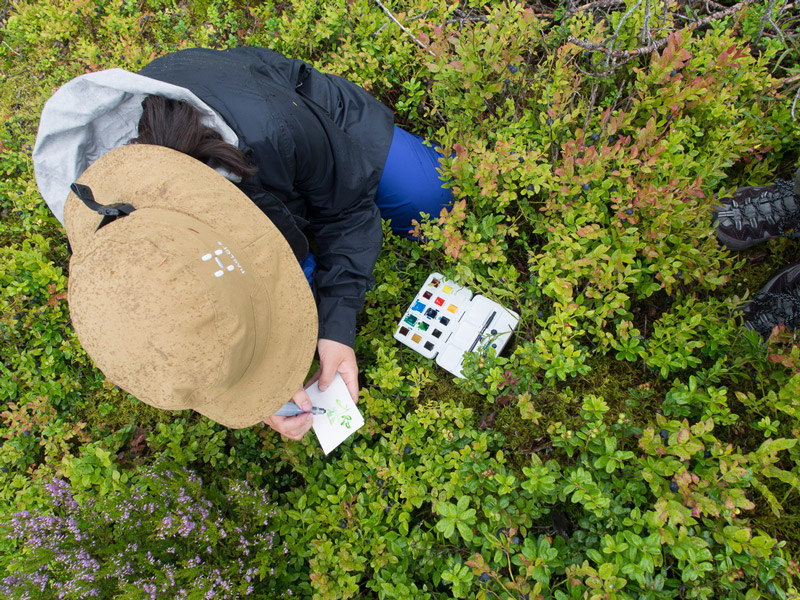
These are my idea sketches on postcard-sized papers. I learned this method from a textile designer, Katsuji Wakisaka.

During my stay at the summer cabin, I sketched and expanded my ideas in preparation for my first solo exhibition in Tokyo.
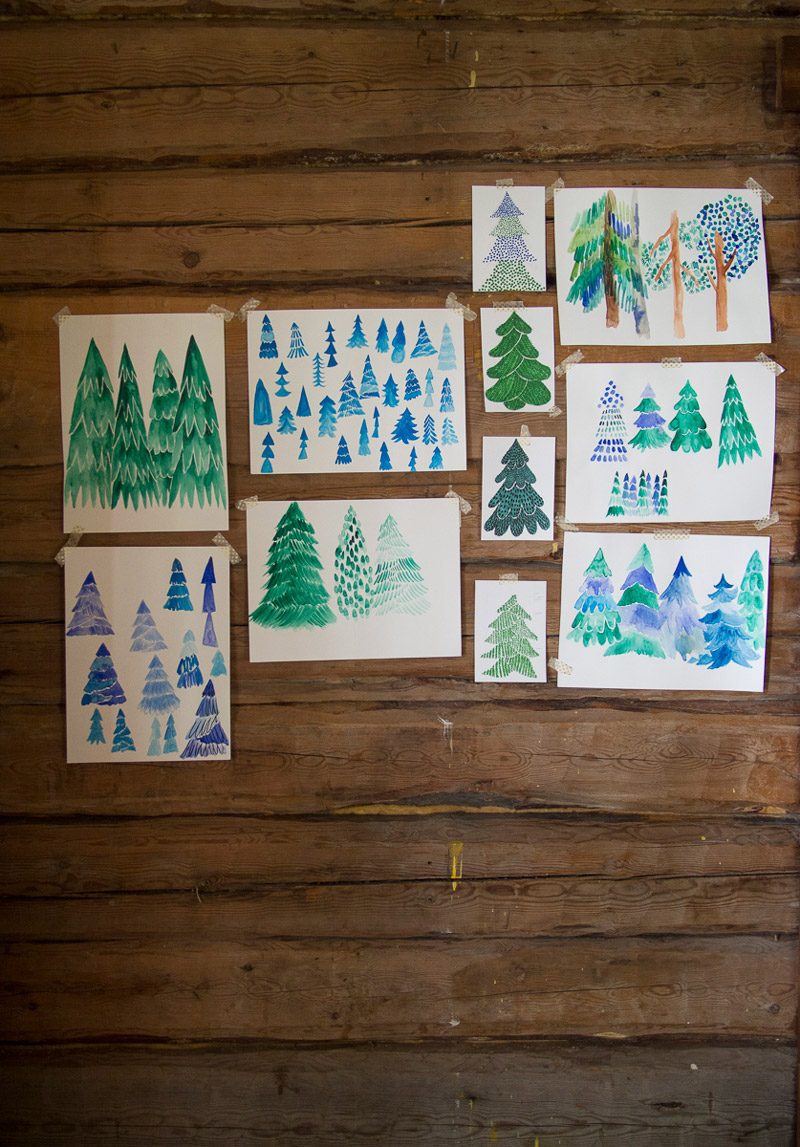
There is a forest between my house and college that is approximately 20 minutes away by bicycle. Cycling through the forest, I see various animals. Here are pictures where I reside and the neighborhood. It is just 10 minutes away from the center of Helsinki by metro. You can fully enjoy the nature in Helsinki, the capital city of Finland.

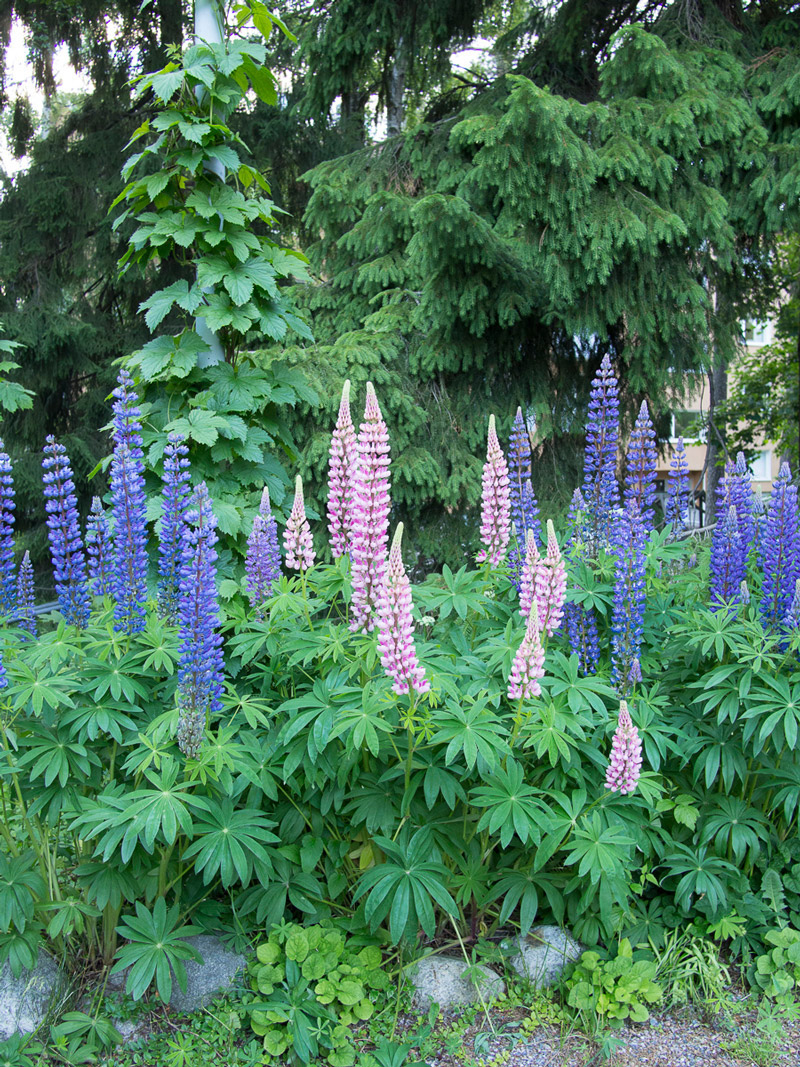
I usually make sketches on postcard-sized papers to form my ideas into to design. For PIKKU SAARI, I designed patterns in sequence, following a story line on the theme of “home party”. It was like the process to prepare for clothing collection.
PIKKU SAARI consists of three patterns, including its iconic print “SAARISTO”. SAARISTO means a group of islands in Finnish. The motif of islands in the sea is abstractly depicted, and I hope every person can get a different impression from this fabric. I named my textile brand, PIKKU SAARI that means a small island in Finnish, inspired by the hearty lifestyle of the islands. And, you know what? My last name is “Shima”-tsuka. “Shima” means an island in Japanese! The brand name is predestined!
I chose cotton/linen as a material for SAARISTO, because I wanted to use linen, one of the traditional specialties of Finland. In the old days in Finland, linens were traditionally weaved by grandmas.
Below are the pictures from the catalog of PIKKU SAARI, staging the cozy home party scenes at an old house just like the one where “Pippi Longstocking” lives.
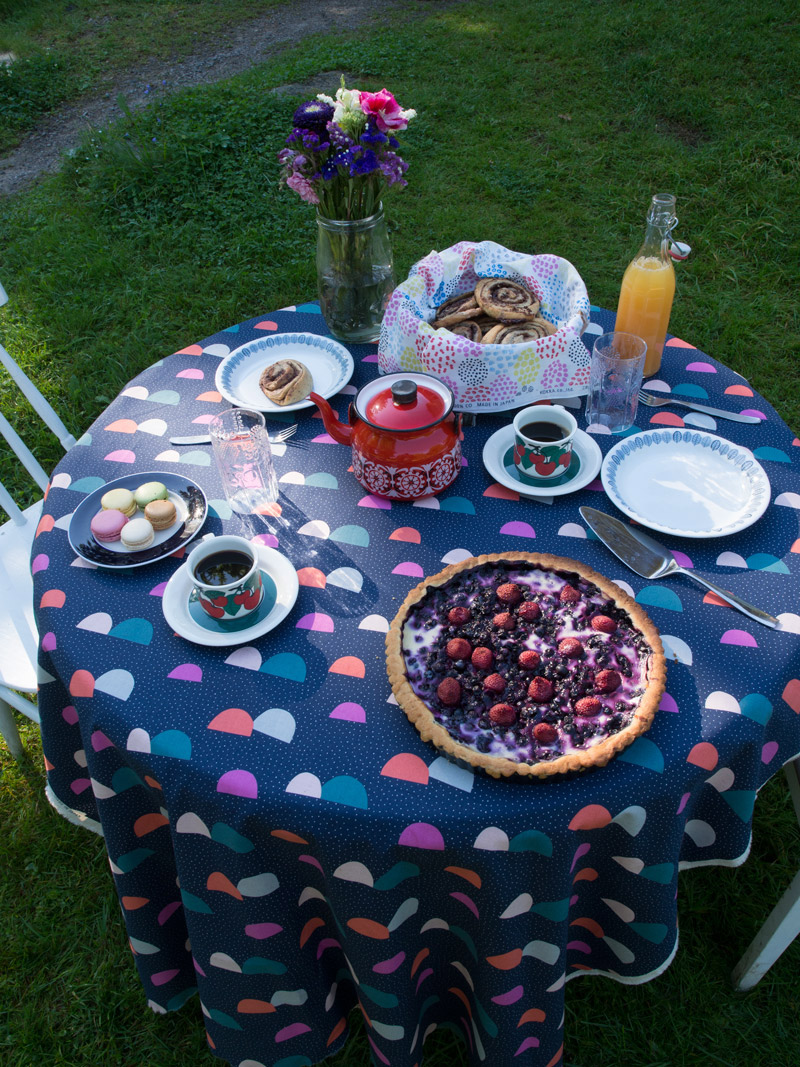

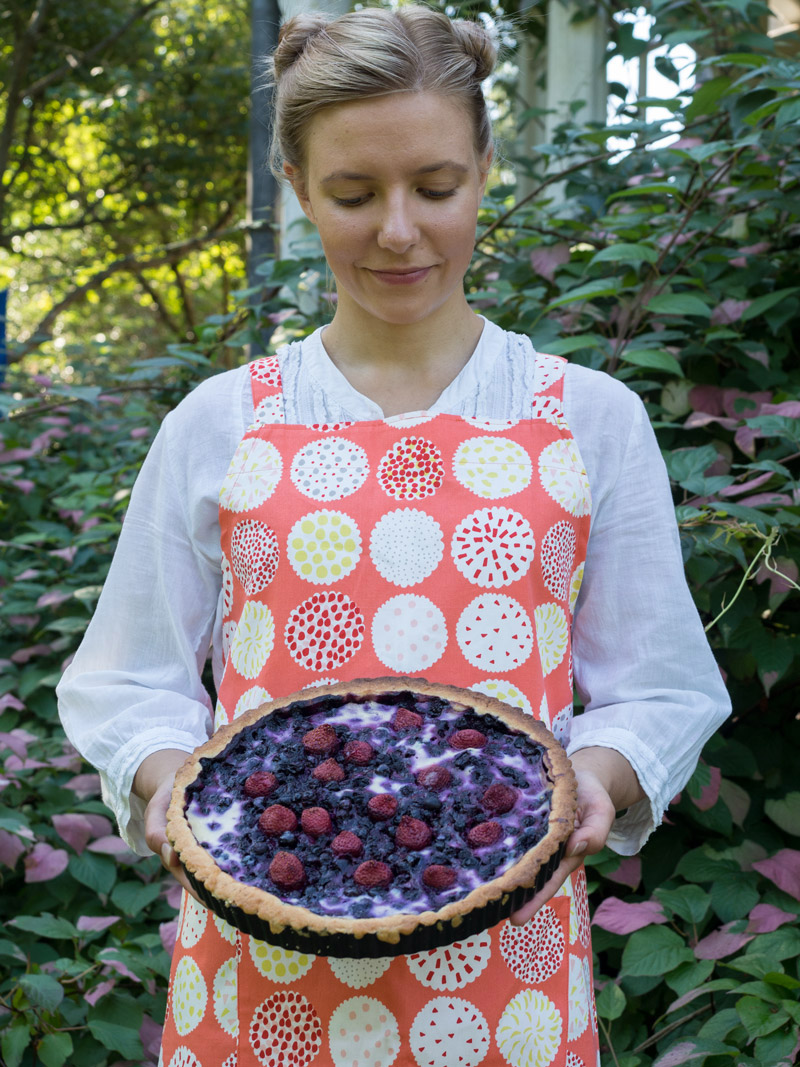
Finland has two opposite aspects: “short and brilliant summer” and “long and dark winter”. Both are very important elements to know about Finland. The extreme changes in weather and daylight have led to unique architectures in Finland to get a lot of sun inside. I wanted to show it at my exhibition that textile in different colors can create a different feel. I hope to continue bringing you feel the Finnish lifestyle and culture through my textile.

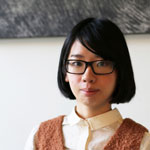 visit artist file 014Sawako Ura (Designer)
visit artist file 014Sawako Ura (Designer)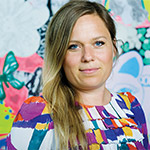 file 007
file 007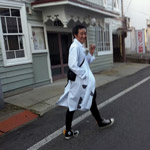 file011
file011